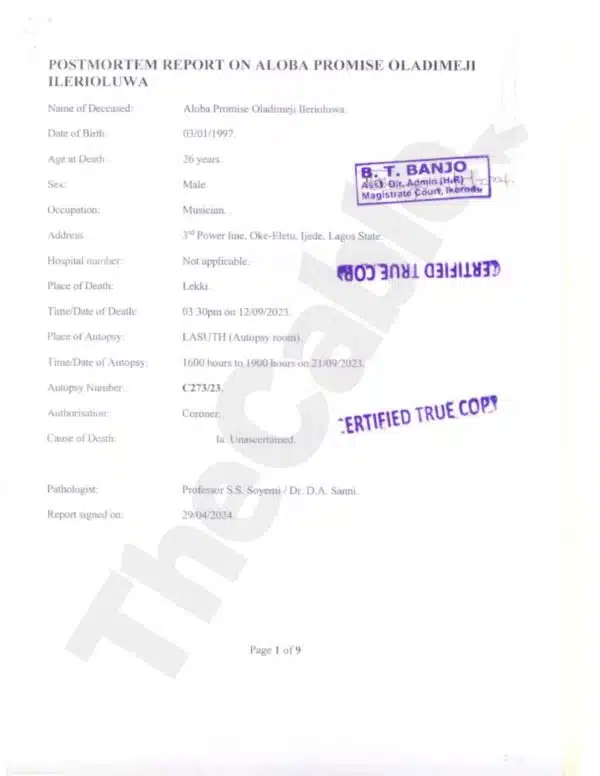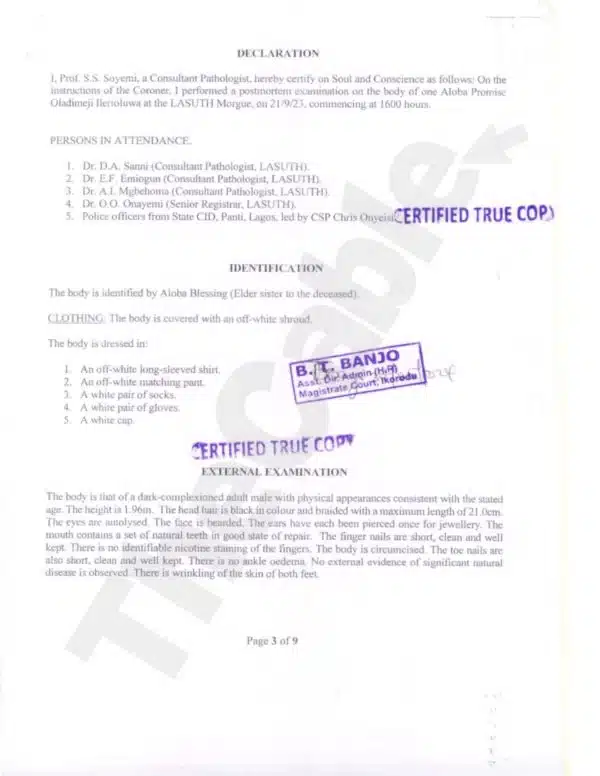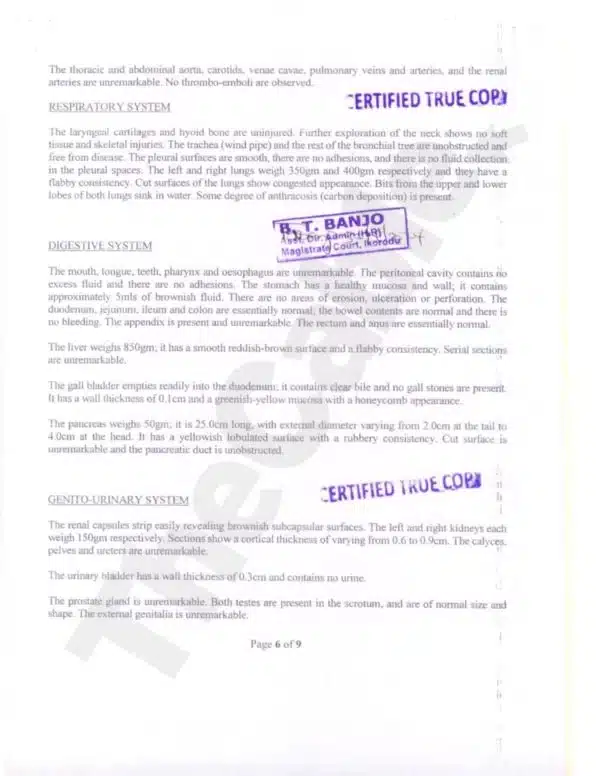

The autopsy conducted on the late singer Ilerioluwa Aloba, known as Mohbad, has revealed the potential cause of his death.
This comes barely a month after Sunday Osiyemi, a forensic scientist and pathologist at the Lagos State University Teaching Hospital (LASUTH), informed coroner Adedayo Shotobi, a magistrate, that the autopsy had not determined the cause of his death.
In its Friday report, the Cable newspaper said the autopsy and toxicology tests conducted at Lagos State University Teaching Hospital indicated that a fatal anaphylactic shock or drug reaction could have been the cause of Mohbad’s death.
Anaphylactic shock is a severe and potentially life-threatening allergic reaction.
It’s caused by the immune system releasing chemicals that can lead to shock, such as a sudden drop in blood pressure and narrowed airways that make it hard to breathe.
The report also said the hospital retrieved samples of Mohbad’s gastric content, blood, bone marrow, liver, kidney, and lung for toxicology testing.
The paper further said the anatomical and pathological findings revealed Mohbad had an injury on his right forearm, and his body was exhumed with moderate to severe decomposition eight days after his burial.
The autopsy, according to the paper, showed no significant gross findings that could be attributed to the singer’s death.

Additionally, the paper stated that the report indicated that toxicology results revealed the presence of Diphenhydramine, an antihistamine.
Antihistamines are medications used to treat symptoms of allergies, stomach issues, colds, and anxiety, among other conditions.
The Cable noted that the autopsy report concluded the concentration of the drug was not fatal or harmful enough to cause his death.
The report added that the cause of Mohbad’s death could not be determined.
Autopsy report
The report goes thus: “It is noteworthy that the body neither had an autopsy nor embalmed before interment on the second day.
“Following the Order for Exhumation, the body was exhumed on 21/09/2023 (8 days after the burial). Autopsy revealed moderate to marked decomposition of organs. Apart from the superficial injury on the right forearm, no significant gross finding could be attributed to death.
“Against this background, samples were taken for toxicology. This is to determine if there was any anaphylactic reaction, substance abuse, overdosage, or common household poisoning. Toxicology revealed positive findings of Diphenhydramine, an anti-histamine; however, this concentration was not in a fatal or lethal range. The other analytics were unremarkable.
“In determining fatal anaphylactic shock, a blood sample must be taken as quickly as possible. Unfortunately, this was prevented or made impossible by the burial of the deceased on the second day. In the light of the preceding, the cause of death could not be ascertained.
“However, the possibility of a fatal anaphylactic shock (drug reaction) could be considered given the absence of any significant post-mortem and toxicology findings.”


















1 Comment